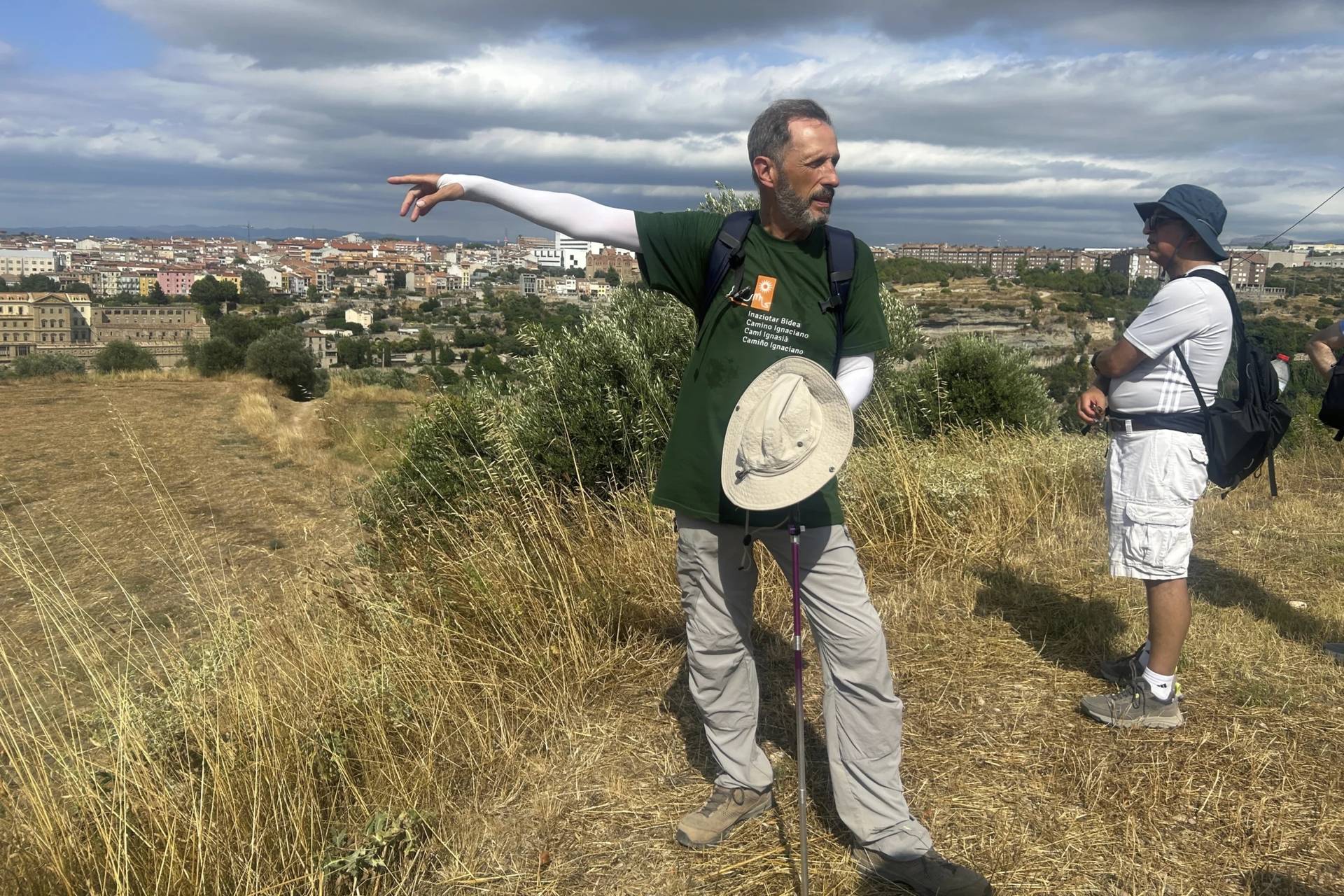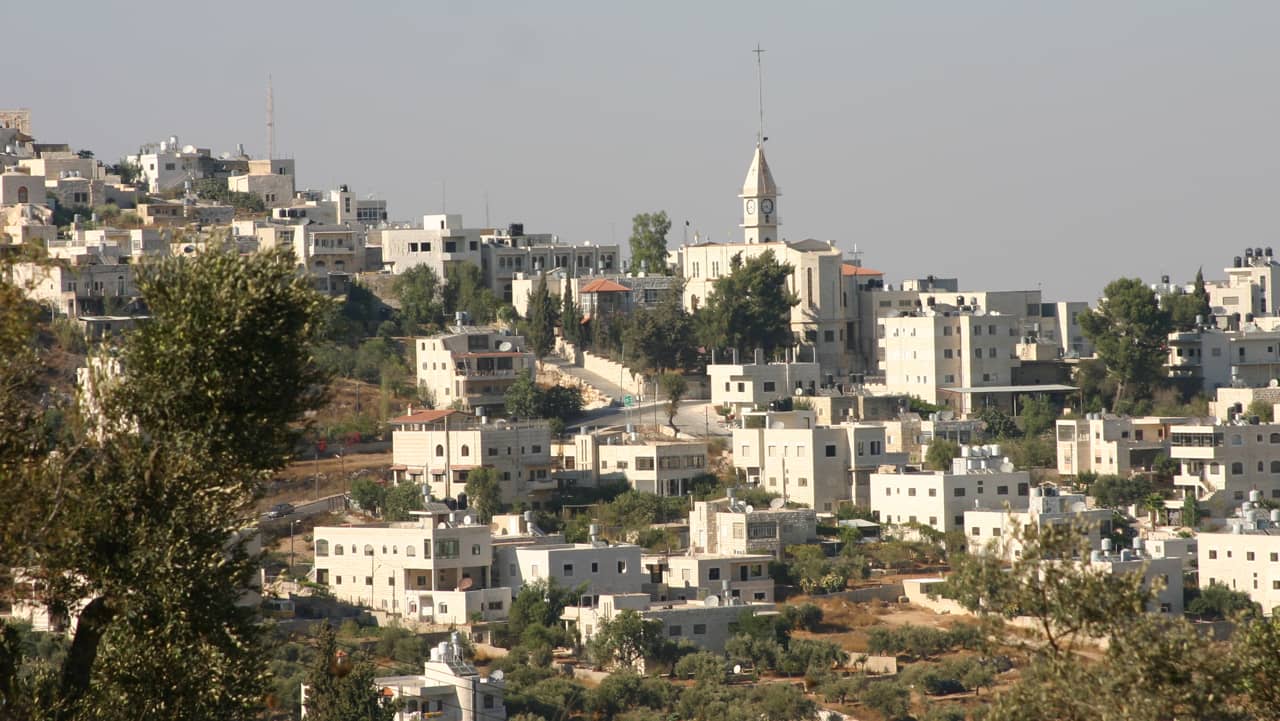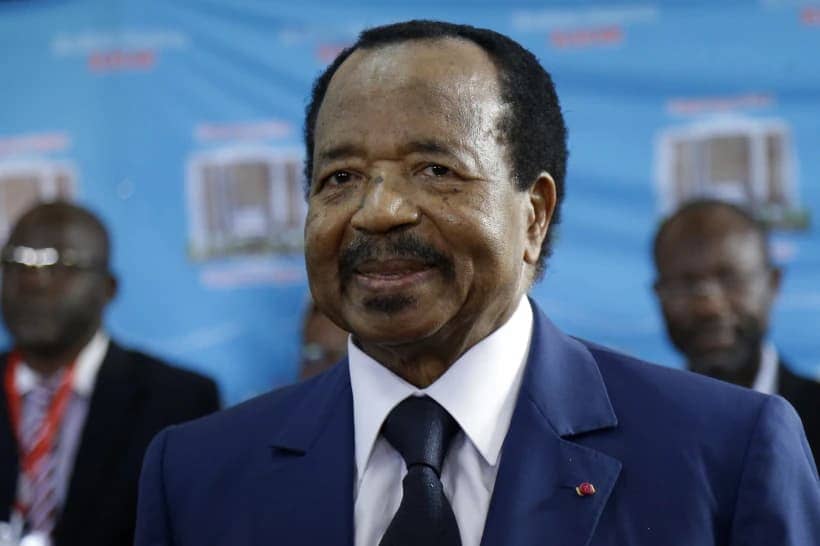WASHINGTON, D.C. — When Pope Francis celebrated a canonization Mass for St. Junípero Serra in September 2015 outside the Basilica of the National Shrine of the Immaculate Conception, he encouraged today’s Catholics to emulate the motto of the famous 18th century Spanish Franciscan missionary of California: “Keep moving forward!”
That could also have served as a motto for the National Shrine itself in the century since its foundation stone was laid in 1920, maybe with an added, “Onward and upward.”
That march of progress is culminating in the Trinity Dome mosaic, a project publicly launched on Oct. 28, which will mark the basilica’s completion next year.
“When this Trinity Dome is finished, I think it will be the crowning jewel of the shrine,” said Monsignor Walter Rossi, the basilica’s rector, who joined Cardinal Donald Wuerl at the blessing of the work site for the dome on the top deck of an eight-level network of scaffolding rising 159 feet above the basilica’s nave.
In January 2017, artisans will begin applying the mosaic to the basilica’s major interior dome, with the goal of completing the project before Christmas. The Trinity Dome mosaic will be composed of more than 14 million pieces of colorful Venetian glass called tesserae, which are now being fabricated in Italy.
The Trinity Dome mosaic will depict the Holy Trinity, the Blessed Virgin Mary as the Immaculate Conception, and angels joined by a procession of saints with a special connection to the Americas and to the basilica itself.
In an interview with Crux, Rossi reflected on the final design stage for the Catholic landmark of faith in Washington, D.C., with its majestic Great Dome and Knights Tower evoking comparisons with the U.S. Capitol dome and Washington Monument in the nation’s capital.
In 2017, he will mark his 20th year working there. Rossi, who grew up near Scranton, Pennsylvania, first visited the shrine as a high school student in the late 1970s, when he visited a cousin in Washington studying for the priesthood. Back home, he recently found a Polaroid photo of himself as a teenager posing on the shrine’s steps.
Following his ordination to the priesthood in 1987, Rossi came back to Washington in 1995 to earn a degree in canon law at The Catholic University of America, which is located next to the National Shrine. Later as a parish priest in Scranton, he was that diocese’s pilgrimage director and led pilgrim groups to the shrine.
Then in 1997, he was named as the National Shrine’s associate rector and as its director of pilgrimages and became the basilica’s rector in 2005.
Now he tells people his job is “pastor of the largest Catholic church in the United States,” which serves nearly one million pilgrims who visit the shrine from across the country and around the world.
Almost four decades after posing on the National Shrine’s steps as a teenager, the priest leading the National Shrine will witness the completion of its design.
“This is without question history in the making. It’s great to be a part of history, as we see the upper church nearing completion,” he said.
Like many of the great cathedrals in Europe, the basilica’s completion has spanned a century. For decades, the shrine existed on one level that included its Crypt Church, as its construction was delayed by the Great Depression and World War II. Then in the post-war years, a national collection helped fund the erection of its superstructure, and the Great Upper Church was dedicated in 1959.
In the years since, an array of 80 chapels and oratories honoring Mary and representing different ethnic, racial and cultural groups within the United States have been added to the shrine, which was elevated by Pope John Paul II to the status of a basilica in 1990.
The basilica’s rector spoke of the pride of longtime Washingtonians who witnessed the upper church being built, and of pilgrims from different ethnic communities whose generosity helped build its chapels, and who come to pray there, year after year.
“They feel they are part and parcel of the shrine… It has become part of the fabric of who they are,” he said.
Rossi said it is especially fitting that the Trinity Dome will be adorned with a mosaic that will feature more than 1,000 color variations of Venetian glass. That reflects “the mosaic which makes up the Catholic Church in the United States,” he said.
“The dome is reflective of the people who come to this National Shrine. Without question, it’s probably the most diverse Catholic church in the United States,” the priest said, noting that the congregation at its Masses and the pilgrims who visit come from all different backgrounds and walks of life.
At the blessing ceremony for the Trinity Dome work site, Wuerl said that’s a point he made to Pope Francis when he visited the National Shrine last year, and to Pope Benedict, who visited the basilica in 2008 — the pilgrims they would see, like those he sees from the altar every time he celebrates Mass there, reflect “the face of America (with) so many rich traditions and backgrounds that are part of our nation and our Church.”
In his interview with Crux, Rossi said that the saints who will be depicted in the Trinity Dome also reflect that diversity. They include:
- St. Rose of Lima from Peru, the first canonized saint of the New World.
- St. Juan Diego from Mexico.
- St. Josephine Bakhita from Africa.
- St. Lorenzo Ruiz, the first canonized Filipino martyr.
- St. Teresa of Calcutta, who visited the basilica many times, giving talks there and attending her Missionary of Charity sisters’ profession of final vows at the shrine.
- St. John Paul II, who met with women religious there and prayed at its Chapel of Our Lady of Czestochowa during his 1979 visit to Washington.
The nine saints from the United States include St. Elizabeth Ann Seton, St. Damien of Molakai, and St. Kateri Tekakwitha, the first Native American saint.
“It speaks to the spiritual value of this place, that the saints came here to pray,” the basilica’s rector said.
Rossi expressed admiration for the skill and dedication of the artisans who are creating the mosaic in Italy that will be applied to the dome in 2017, and to the workers in Washington who erected the scaffolding, which he called “an engineering marvel.”
At the blessing ceremony, Rossi said it was “amazing” to see the scaffolding rise above the nave in recent months, with great care taken so that Masses would not be interrupted in the upper church. “It was truly a work of art, like the mosaics will be,” he said.
Many of the workers who helped erect the scaffolding attended the blessing ceremony, and doffed their hard hats as the cardinal sprinkled holy water on the dome and work site.
The priest has visited the work site of the mosaic artists in Spilimbergo, Italy, several times, watching as they sit at benches with hammers, chisels and tweezers to fabricate the intricate design.
“There is no machine work whatsoever, it’s all done by hand,” he said. “It not only takes great skill, it also takes great patience.”
Rossi noted that the owner of the Travisanutto company creating the mosaics is no stranger to the National Shrine.
The firm crafted the mosaics for the basilica’s Redemption Dome in 2006 and its Knights of Columbus Incarnation Dome dedicated the next year. The priest added that Giovanni Travisanutto as a young man helped install the dramatic Christ in Majesty mosaic in the north apse of the National Shrine’s Great Upper Church.
At the blessing ceremony, the priest announced that the nation’s Catholics would be invited to join a fundraising effort for the Trinity Dome, which will include a one-time special collection taken up at parishes across the United States on Mother’s Day in 2017.
Such generosity dates back to the National Shrine’s beginnings. The Mary Memorial Altar in its Crypt Church was built in 1928 with the donations of 30,000 women across the United States named Mary or who had a loved one named Mary, whose names are all sealed within the altar.
“This National Shrine, a century in the making, exists because of the generosity of American Catholics” and their prayers, the priest said.
When pilgrims to the Basilica of the National Shrine of the Immaculate Conception look up at the completed Trinity Dome, Rossi hopes they will be drawn to reflect prayerfully on the saints and heaven, people like them, from all backgrounds and walks of life, led by Mary to be united with the Holy Trinity for eternity.
“It will be a gift for generations to come, when they come to their church to worship,” he said. “This is something American Catholics can be proud of, because they made it happen.”
(For information on the Trinity Dome and how to contribute to the effort, go to www.trinitydome.org).















